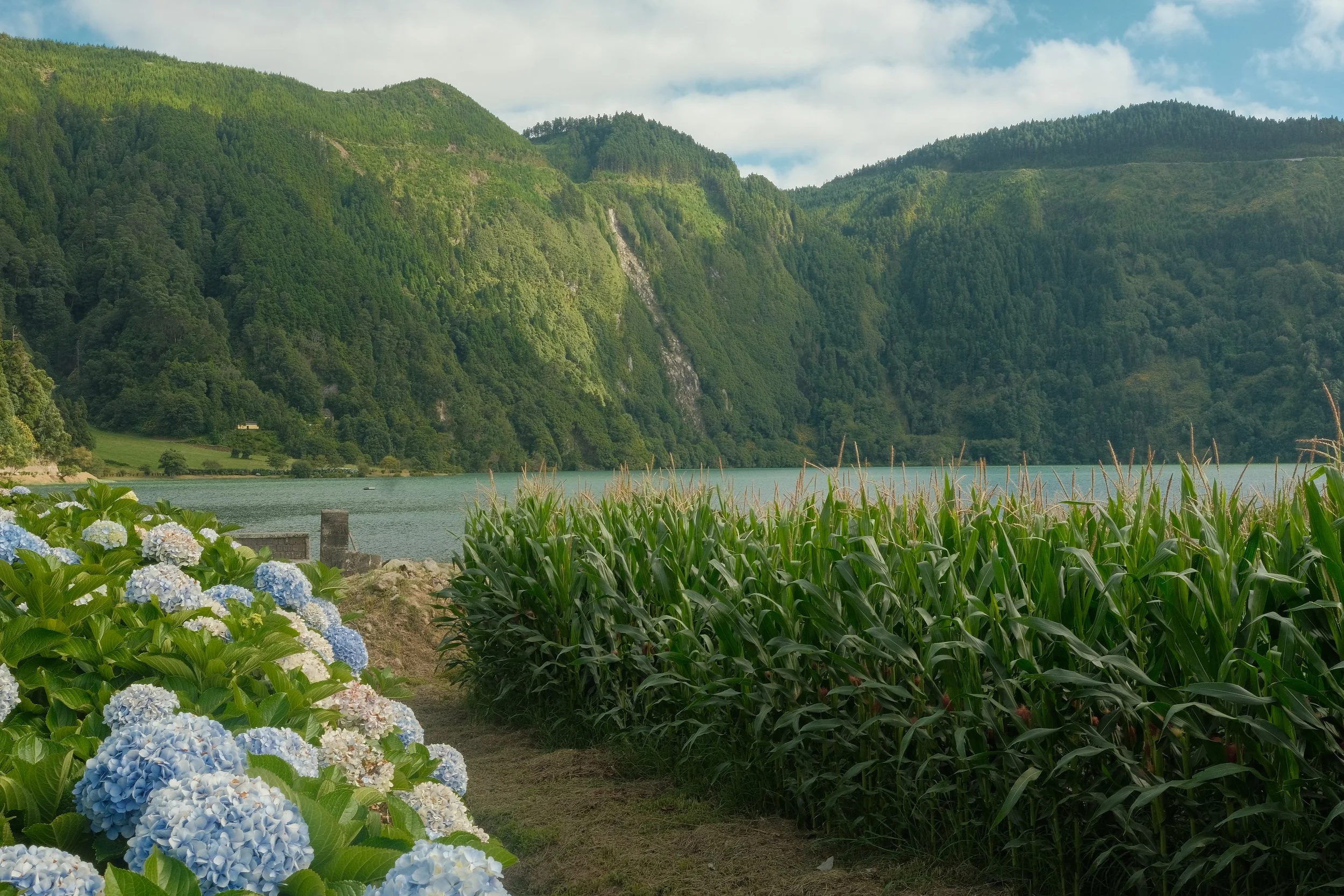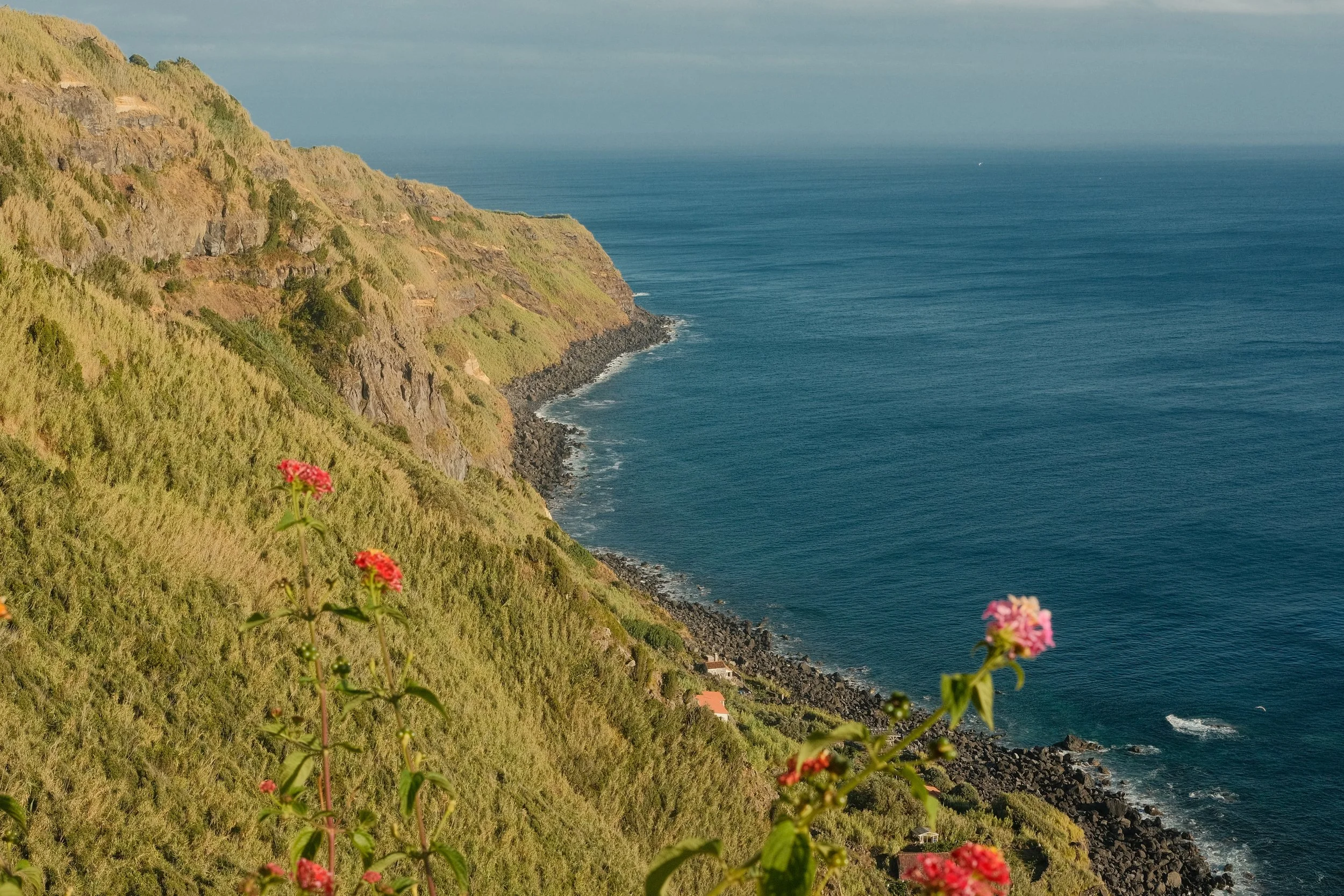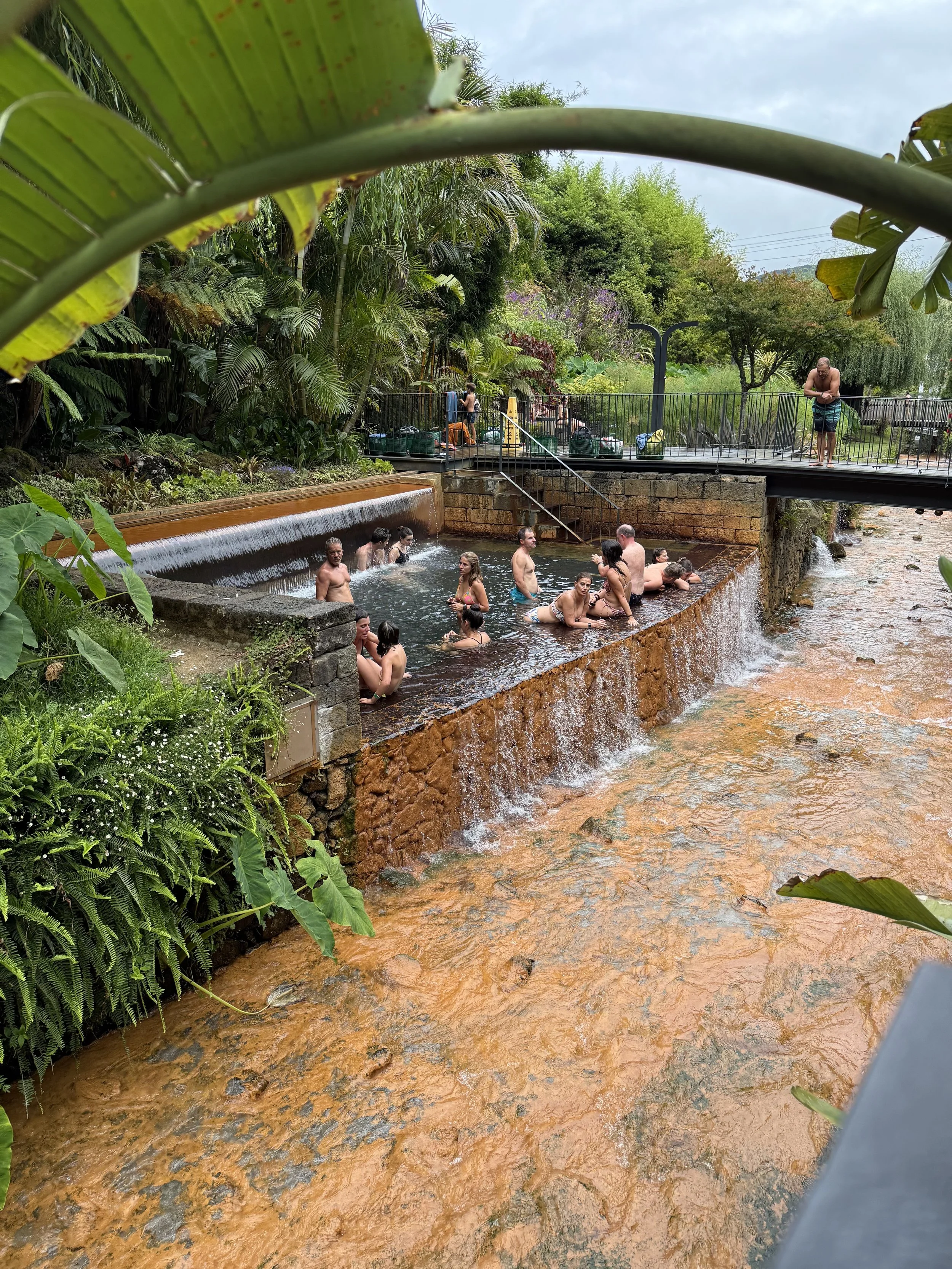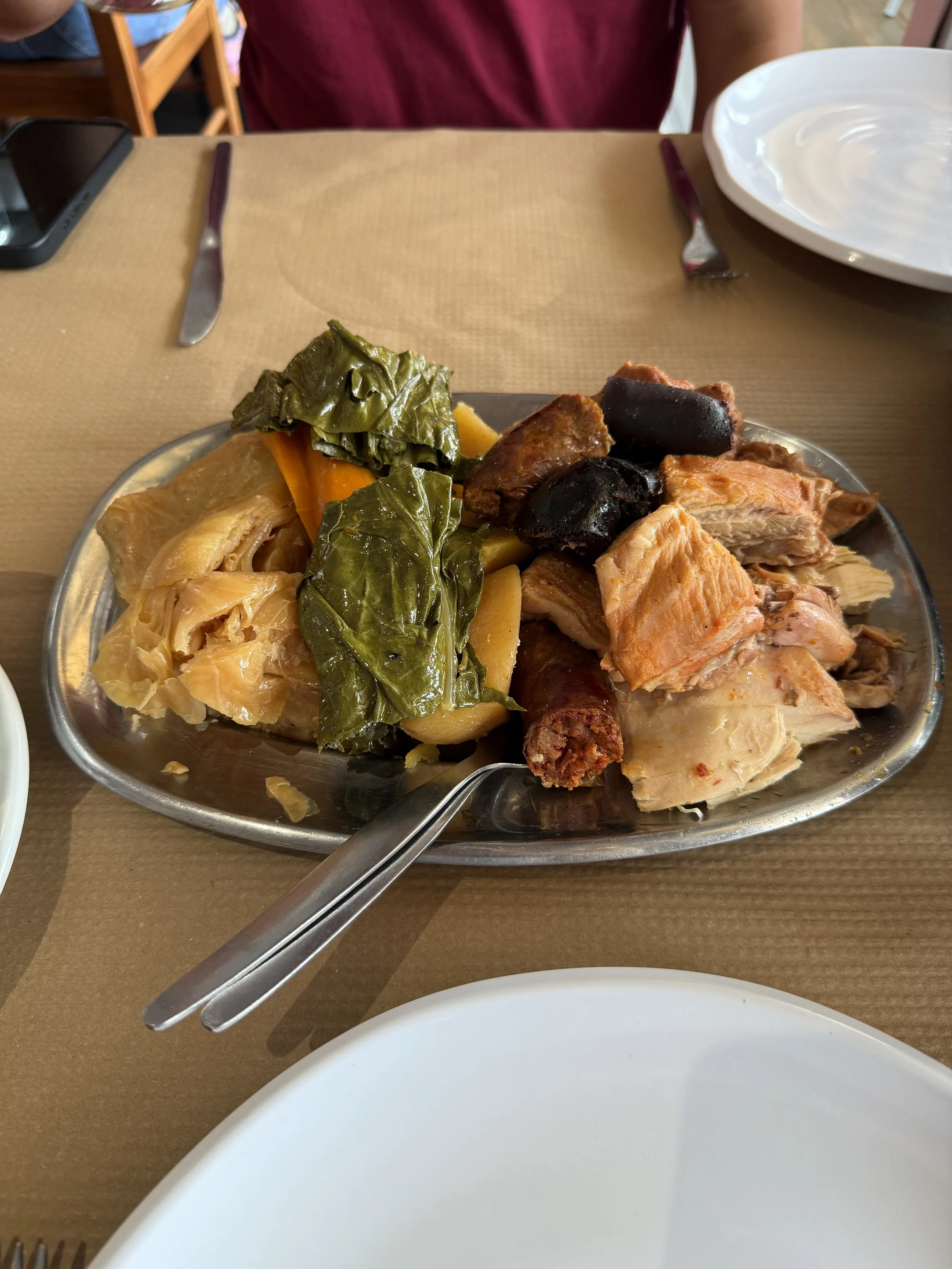Hydrangea Paradise in the Azores
Greetings from the lush paradise of the Azores! The Azores, an autonomous region of Portugal, are a group of nine volcanic islands in the North Atlantic Ocean. We’re staying on the largest island, São Miguel, nicknamed The Green Island - and it’s easy to see why. Rolling hills stretch for miles, verdant cliffs plunge into the Atlantic, crater lakes shimmer in shades of blue and green. Everywhere we go, it feels like we’ve stumbled into a movie set for some land before time - otherworldly and jaw-droppingly beautiful.
Blossoms & Blue Skies
When it comes to the beauty of this island, it’s impossible not to start with the hydrangeas. While doing some last-minute TikTok research on “things to do in the Azores” at the airport, I stumbled across countless videos of São Miguel’s roads lined with big, blue blossoms. That led me down a rabbit hole Googling “where to see hydrangeas in São Miguel” - with no luck. Once we landed, I quickly realized why. There isn’t one place to see them because they are quite literally everywhere. Nearly every road, lake, hillside is framed with fluffy hydrangeas - white, pink, purple, but mostly blue (fun fact - the color of hydrangeas depends on the acidity of the soil, and since volcanic island soil tends to be more acidic, most hydrangeas here are blue). Despite their pervasiveness, hydrangeas aren’t actually native to the Azores - they were brought over from Japan in the 19th century and thrived in the fertile volcanic earth. They’ve spread so successfully that they’re actually considered an invasive species. Hard to believe something so breathtaking could actually be quite problematic!
After checking into our hotel and devouring a delicious tuna steak for lunch, we decided to go for an afternoon hike at Rocha da Relva, a nearby walking trail on the south side of the island. “Walking trail” turned out to be a bit of a misnomer. We followed the path down a steep descent towards the coast and huffed and puffed our way back up. Still, it was more than worth it for the incredible views of the Atlantic crashing into the rocky shoreline. Standing there, it felt almost surreal to think this was the same ocean I knew from home, only now we were meeting it from the opposite shore.
The sky had been overcast since we landed, which was a bit of a bummer since I was looking forward to seeing a beautiful sunset. But the weather in the Azores is famously unpredictable - shifting between sun, fog, and rain, sometimes all in one day. Sure enough, the clouds began to clear midway through our hike, giving glimpses of blue sky and a glimmer of hope for sunset.
After our hike, we decided to take our chances and drive over to the Boca do Inferno viewpoint on the western side of the island, which had come highly recommended to me by my TikTok algorithm. Dark clouds gathered closer as we wound our way up into the mountains, but we figured worst case we could just come back another day. Luckily, the sky cleared just as we arrived, revealing the most magical glowing sunset over the twin crater lakes of Sete Cidades below. The weather had kept most of the crowds away, so we had the view almost all to ourselves, which made it feel even more special. It was a good reminder that when in doubt, we should always go for it!
Tea, Pineapples, and Slow Moo-ving Traffic
The Azores are rich in agricultural products & traditions, and we spent a good amount of time exploring them. I’ll start with tea - São Miguel is home to Europe’s only two tea plantations, and we visited the oldest, Chá Gorreana, on our third day. How did we pick this one? I could say it was for the history or the beautiful grounds, but honestly, it was the Google reviews for the well-loved resident cat that sealed the deal. After some quality cat pets, we sampled free tea, did a self-guided tour of the factory, and learned how the tea is made. I found out that green tea and black tea come from the same plant: camellia sinensis. The difference is in how the leaves are processed after harvesting: green tea is quickly steamed to minimize oxidation, while black tea is fully oxidized for a richer flavor. Afterwards, we wandered the plantation grounds, admiring the perfectly manicured tea hedges overlooking the sparkling ocean in the distance. On our way out, I gave the cat an extra pat on the head for doing a great job picking such an idyllic place to live.
Pineapples are another local specialty (and one of my favorite fruits), as the Azores are the only place in Europe where pineapples are commercially grown. We visited Plantação de Ananás dos Açores, a popular pineapple plantation, to see how they’re cultivated. Since São Miguel isn’t tropical enough to grow pineapples outdoors, they’re grown in greenhouses, which produces smaller, sweeter fruit. We wandered through two greenhouses, each filled with pineapples at different stages of growth (including the cutest baby pineapples!), and then capped off our visit with some delicious pineapple drinks at the bar.
Finally, we have to talk about the cows. They’re everywhere - in fact, there are more cows than people on São Miguel. Most of them look like the classic black-and-white cows you see in cartoons. Not only do they photograph beautifully, but black-and-white Holstein cows are known for their high milk yield and primarily used for dairy production. While admiring a herd grazing on a hillside one morning, I overheard a tour guide mention that cows here produce 1.2M liters of milk a day (317K gallons) - holy cow! On our way back to town, we hit a traffic jam caused by a herd moving between pastures. We stopped and let the cows pass - way more enjoyable than the usual bumper-to-bumper I’m used to sitting in before work.
Hot Stuff in Furnas
We spent our last full day exploring Sao Miguel’s volcanic origins in Furnas, a town on the southeast side of the island known for its natural geothermal activity. Furnas is built in a dormant volcanic crater, and although the volcano last erupted nearly 400 years ago, we could see and smell the geothermal activity all around us in the form of steaming fumaroles, thermal pools, and natural mineral springs throughout the town.
Our first stop was Restaurant Tony’s to try the local specialty, Cozido das Furnas - a hearty stew of meats, potatoes, and vegetables cooked for six hours underground with volcanic heat. I love a good stew, and this was no exception. It was warm, comforting, and perfect for a cool, misty day. Later, we drove down to Furnas Lake, where we happened upon cooks digging up a pot of cozido from one of the steam holes in the reserved cooking area. Watching them pull the heavy pots out of the earth gave me an even greater appreciation for how much effort goes into the making of the stew.
We wrapped up the day at Poça da Dona Beija, a natural hot spring spa, where we soaked in thermal pools fed by geothermal hot springs. The water is rich in minerals like sulfur and iron, said to improve circulation, reduce stress, and benefit the skin. I typically don’t have the patience to last more than 10 minutes in a hot tub (unlike Hanqing, who could happily spend all day in one), but I actually enjoyed hopping between the warm baths and admiring the tropical flora around the spa. It was the perfect way to close out five unforgettable days in the Azores.
Thanks for following along with our adventures. Next up, we’re off to another Portuguese volcanic island, Madeira!
Talk soon,
Tanya
















